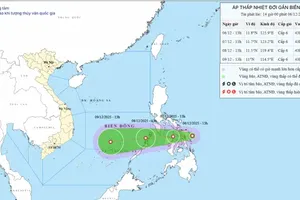
The leader of the National Center for Hydro-Meteorological Forecasting has recently cautioned that the increase in warming temperatures is the primary factor behind the surge in super storms above level 17.
Director Mai Van Khiem of the National Center for Hydro-Meteorological Forecasting’s explanation said that the rise in ocean surface temperatures enhances the volume of water vapor present in the atmosphere are attributable to the recent catastrophic global superstorms; thereby fostering conditions that lead to an escalation in storm intensity.
According to Director Khiem, the 2024 ENSO phenomenon, marked by a swift transition from El Nino to La Nina, has disrupted the balance of ocean heat and moisture, fostering storm formation and development.
Furthermore, the impact of global climate change includes the rise in ocean and atmospheric temperatures, which results in increased energy and water vapor for weather systems. Consequently, this leads to the formation of more intense storms.
Mr. Khiem emphasized that the average global temperature in the first eight months of 2024 was 0.7 degrees Celsius higher than the average of the period 1991-2020 and 2024 could become the hottest year on record. Increase in temperatures will fuel more storms and intensity of strong storms.
Mr. Khiem additionally cautioned that climate change may lead to a decrease in vertical wind shear, which is a critical element that typically inhibits the development of storms. Variations in circulation patterns and air pressure, combined with the temperature disparity between land and sea, establish conditions that are conducive to the formation of storms and enable them to sustain their intensity for extended periods.
In September and October 2024, several super typhoons appeared globally, causing significant damage. Typically:
Typhoon Yagi, Asia’s most powerful storm this year, has left dozens dead since sweeping across the Philippines, China and Vietnam, leaving a trail of destruction with its intense rainfall and powerful winds.
Typhoon Krathon, known in the Philippines as Super Typhoon Julian, was a powerful and erratic tropical cyclone which impacted Taiwan and the Philippines in late September and early October 2024. Krathon was the first storm to make landfall on Taiwan's densely populated western plains recently.
Hurricane Milton caused widespread damage across Florida with deadly tornadoes and storm surge in early October 2024, becoming one of the strongest storms ever recorded in the Gulf of Mexico with winds of up to 180 mph (about 290 km/h)
























